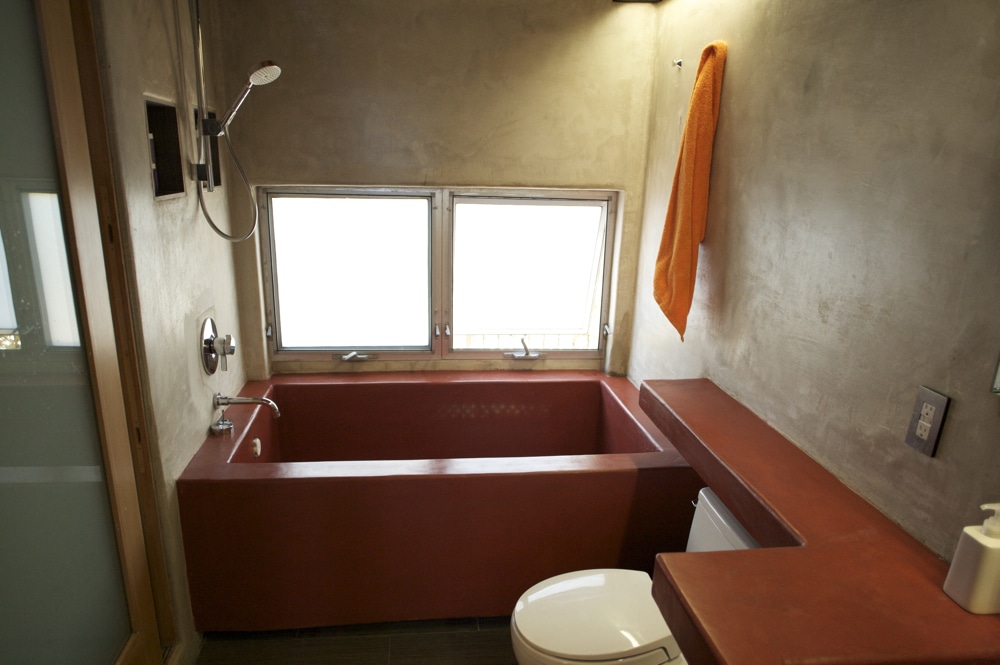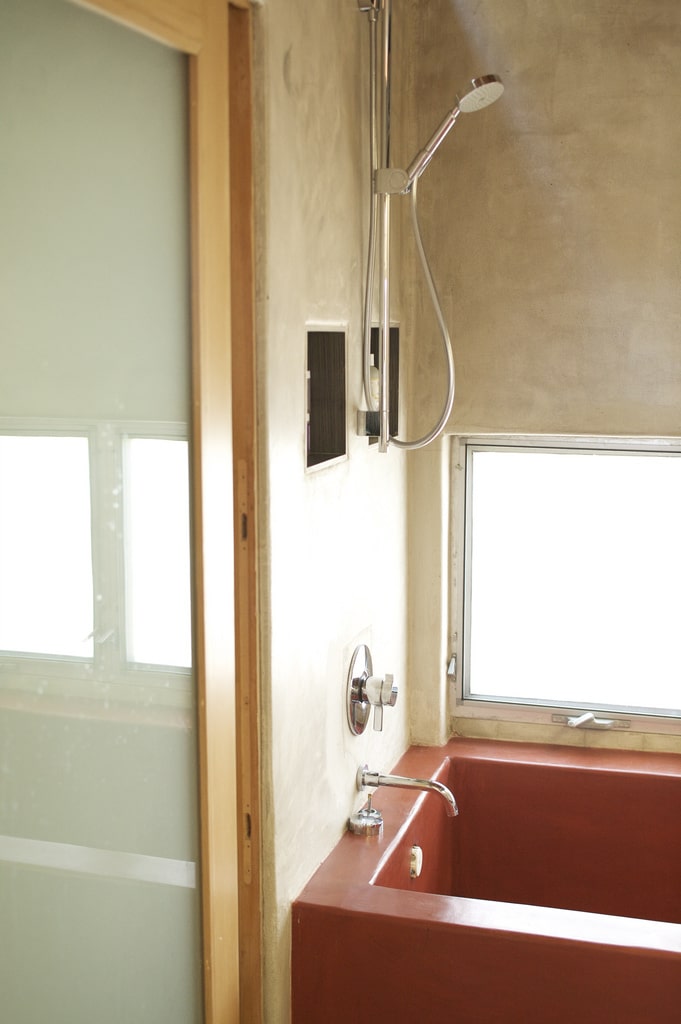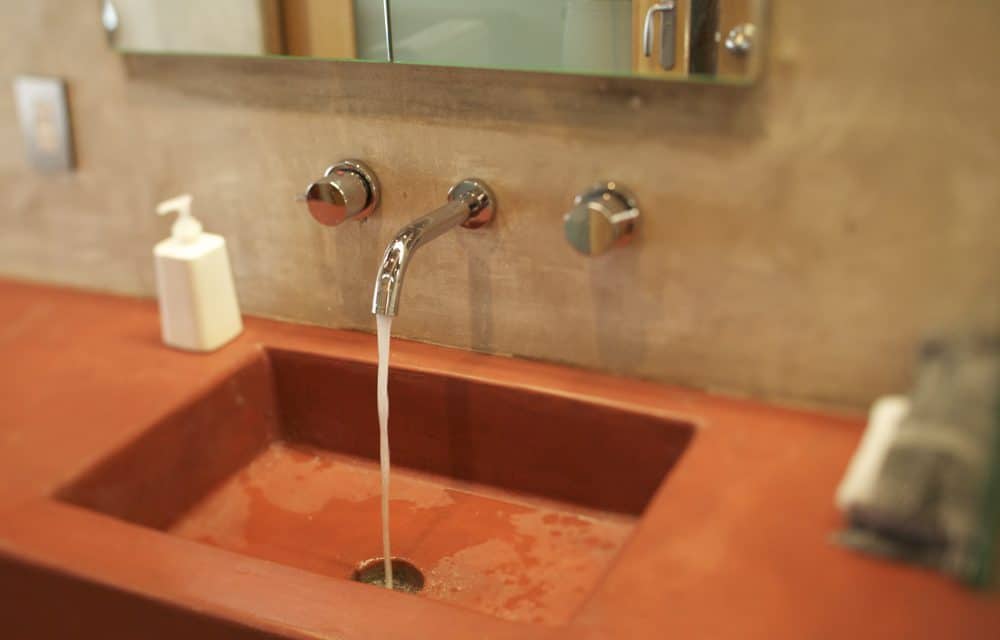What makes this bathroom eco-friendly?
The sink, vanity, and shower are made of 50% recycled coal fly ash and 50% concrete with red pigment.
Concerned about the safety of using recycled coal fly ash? According to the NRDC, there’s no need. They say, “The key to the safe use of coal ash is encapsulation. Encapsulation is the technology that is used at EPA-regulated hazardous waste landfills to make sure that if the toxic waste gets wet, which it does, it is bound at the molecular level into an insoluble compound that will not allow the toxics elements to leach to contaminate underground water sources or surface waters. This is the same technology used in encapsulating fly ash and FGD sludge in concrete and wallboard. Even if coal ash used in construction is demolished, it still will not leach toxics, because even if pulverized, it is not broken down below the molecular level.”

The plumbing is set up for greywater recycling.
Greywater is the used water from bathroom sinks, showers, tubs, and washing machines. It can be captured and reused for irrigating landscapes, reducing the need for freshwater. It also keeps it out of natural bodies of water where the dirt, hair, and care products become contaminants. (Plants treat these things as nutrients.)

The room uses passive daylighting to reduce the use of electricity.
Clerestory windows bring light into the bathroom over the white glass windows and sliding doors, while also providing a view of the courtyard tree.

Project Name: Three Trees
Location: Los Angeles, CA
Designer: Jeremy levine design
www.jeremylevine.com
Photos courtesy of Jeremy Levine / CC by 2.0


